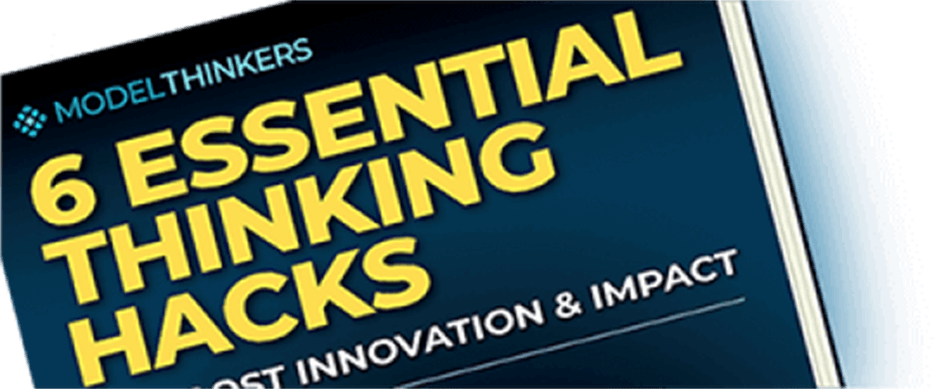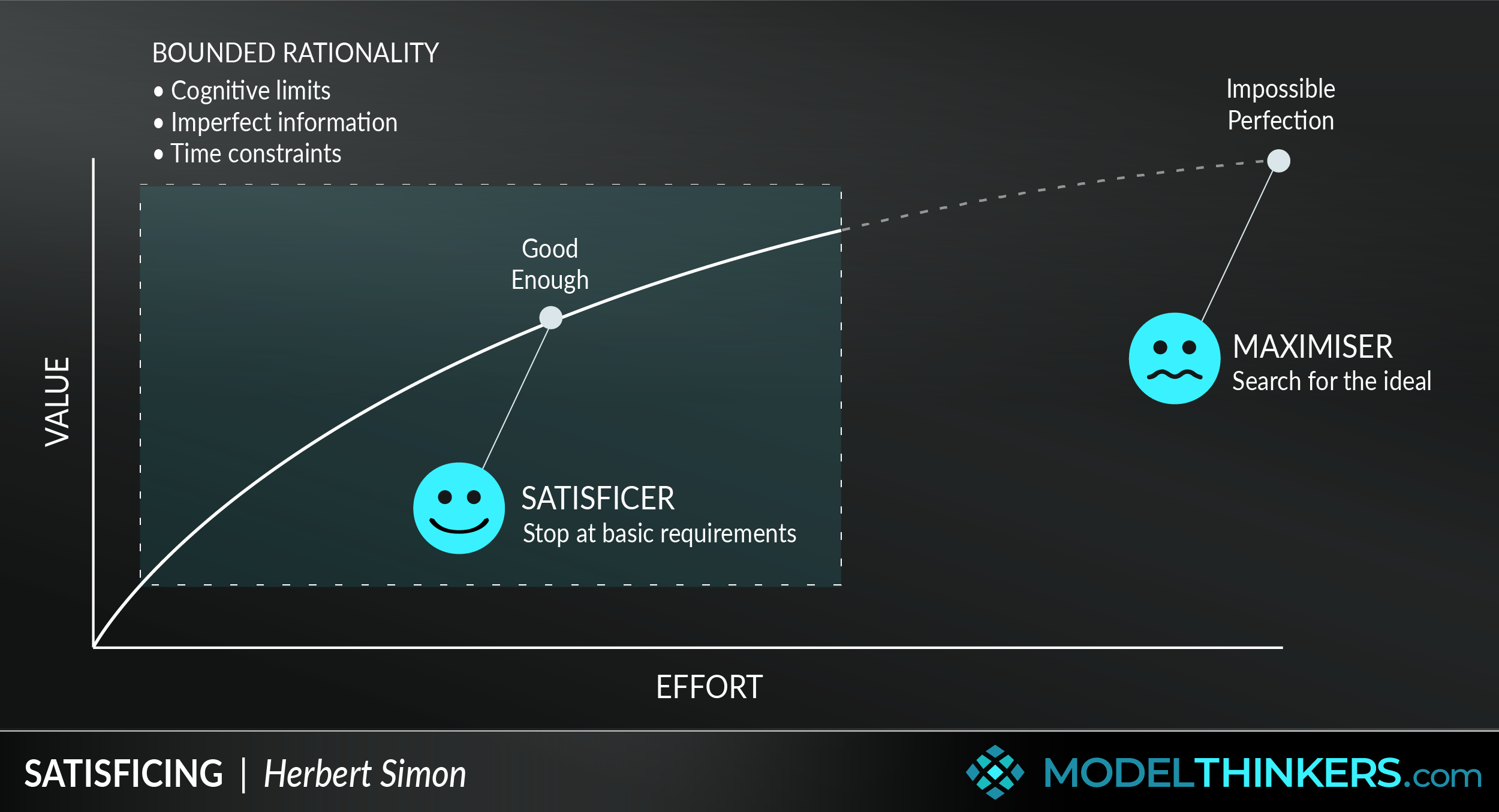Satisficing
Whether you’re struggling with perfectionism, working to an ambitious timeline, want to be happier, or just need help making a decision, Satisficing might be the model that you’re looking for.
A combination of the words ‘satisfying’ and ‘sufficing’, Satisficing is a heuristic for making decisions with the goal of reaching an adequate result, rather than an ideal one.
SATISFICING AND BOUNDED RATIONALITY.
Herbert Simon first described Satisficers and their opposite of Maximisers in the 1950s, in his work on Bounded Rationality, which is the idea that individuals make decisions with limited rationality. Simon pointed to Bounded Rationality stemming from the complexity of a problem, the lack of reliable information related to it in the context of limits of cognitive ability of humans, and time constraints. Despite this, Simon explained that Maximisers seek out optimal solutions to a problem through an exhaustive search of all possible options with the aim of applying a rational decision-making process.
Through arguing the case for Bounded Rationality, Simon challenged the view that decision-making is a rational process where a fully optimal solution is possible, let alone feasible. He therefore advocated for the pragmatic approach of Satisficing or settling for 'good enough' once the basic requirements are met, rather than pursuing an impossible optimal solution.
A KEY TO HAPPINESS?
A number of studies have identified links between chronic Maximising tendencies with impacts on self-esteem, and increases in depression. Psychologist and best-selling author Daniel Levitin has noted that, "Recent research in social psychology has shown that happy people are not people who have more; rather, they are people who are happy with what they already have. Happy people engage in satisficing all of the time, even if they don't know it."
As a result, it's believed that embracing Satisficing might improve your happiness in a number of ways:
Save time and money: investigating options until an adequate solution becomes apparent means that you don’t over-invest your time, resources, or energy.
Reduce regret: by stopping at the first solution that meets your needs you will reduce regret of other possibilities that you won’t even explore.
Focus on what works: rather than what is possible or out in the world, the Satisficer focuses on taking the next step of reducing a pain point or meeting a known need which is particularly impactful in complexity where an ideal future state is likely unrealistic to define let alone reach.
Reduce cognitive overload: by stopping when basic requirements are met, you potentially avoid overwhelm and the Paradox of Choice.
Invest in making your choice work: rather than investing more time and resources into finding the right option, Satisficers are able to invest their saved resources into making the basic option work more effectively for them.
COUNTLESS IMPLICATIONS.
You might start applying this approach on a personal level. For example, use it to choose the groceries you buy, the house you live in, and right up to selecting a life partner. However, Simon’s work also has implications for companies. Indeed, decisions made for large companies often have more complex information and, it could be argued, that Bounded Rationality will particularly apply in the context of large, complex decisions.
Beyond that, it has implications for product design, sales and business more generally based on an understanding that people will generally make a decision based on a quick assessment of removing pain or addressing a need, rather than a deep investigation and search for the optimal approach through rational deliberation. Indeed, marketing empires have been built on this understanding through the use of simple tag lines and clever branding.
IN YOUR LATTICEWORK.
Simon’s broader work around Bounded Rationality served as a foundation for Behavioural Economics, which went further than seeing rationality as bounded and framed it as fundamentally limited in our human condition, particularly captured through Kahneman’s Fast and Slow Thinking.
Satisficing helps to explain the Lock-in-Effect, and the dangers of Maximising in regard to happiness can be better understood in terms of Framing. Satisficing can also help to inform strategies being developed as part of the 4Ps of Marketing, and help choice architects to apply nudges using the EAST Framework.
The Pareto Principle helps to explain the danger of diminishing returns when investing time beyond meeting basic requirements, or beyond the ‘20’ that will provide ‘80’ of the value. When stopping with a few options, rather than creating an exhaustive search, try using the Pugh Matrix to check them against your current state and select 'good enough'. And finally, the Kano Model provides an interesting view of where Satisficing is most appropriate, and where it might be worth stretching to go beyond the basic requirements to deliver greater value.






